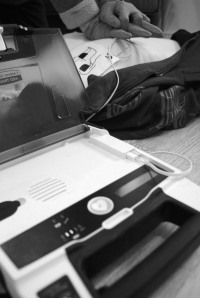Year in review 2011: Critical Care – Out-of-hospital cardiac arrest and trauma
Critical Care 2012, 16:247
In 2011, numerous studies were published in Critical Care focusing on out-of-hospital cardiac arrest, cardiopulmonary resuscitation, trauma, and some related airway, respiratory, and response time factors. In this review, the authors summarise several of these studies, including those that brought forth advances in therapies for the post-resuscitative period. These advances involved hypothesis-generating concepts in therapeutic hypothermia as well as the impact of early percutaneous coronary artery interventions and the potential utility of extracorporeal life support after cardiac arrest. There were also articles pertaining to the importance of timing in prehospital airway management, the outcome impact of hyperoxia, and the timing of end-tidal carbon dioxide measurements to predict futility in cardiac arrest resuscitation. Subjects covered include:
- Impact of adding percutaneous coronary artery intervention as part of a routine post-resuscitation care bundle following cardiac arrest;
- Oxygenation levels and end-tidal carbon dioxide concentrations during cardiopulmonary resuscitation efforts;
- Extracorporeal life support for out-of-hospital cardiac arrest;
- Additional perspectives on emergency medical service response intervals and outcomes following cardiopulmonary arrest; and
- Evolving insights on prehospital airway management;
The authors added to the growing evidence in support of percutaneous coronary intervention for survivors of OHCA, and time to goal temperature for mild induced therapeutic hypothermiawas found to be a complicated issue. Concerns over hyperoxia in cardiac arrest survivors were again raised, although the impact of this finding may not be as clear as previously thought. The ability of ETCO2 measurement to predict return of pulse was further defined in terms of timelines for making decisions to terminate resuscitative efforts. The articles also provide some evidence for extracoporeal life support as a potential intervention for OHCA. Authors further highlighted the importance of faster responses by prehospital care providers, bystander CPR, and early AED use in the management of OHCA and provided new perspectives such as response time reliability. Finally, it appears that the earliest placement of an advanced airway is important and that extraglottic airways may be a useful alternative to ETI in OHCA. However, in the moderately injured patient, providers may need to be more conservative in their decision to place an endotracheal tube. Nevertheless, depending upon the patient, ETI may still have important utility in trauma care.
http://ccforum.com/content/16/6/247 (link to full text article)

